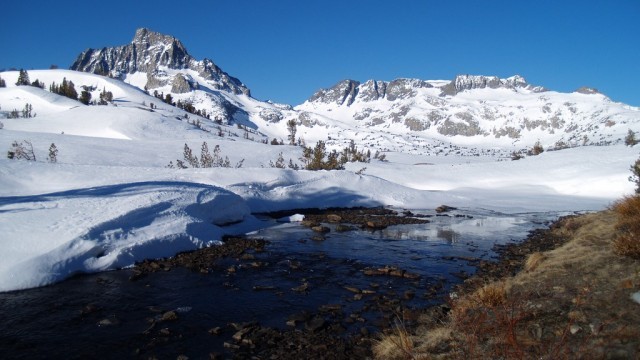
By Kitty Felde, KPCC.
Attention skiers: climate change means fewer trips to Tahoe this century. That’s the word from a first-time study by the Department of the Interior. Less snow also means additional challenges for storing water during drier months.
According to the DOI’s Sacramento and San Joaquin Basins Climate Impact Assessment, the average temperature in California’s Central Valley is predicted to rise by about 3 degrees Fahrenheit by mid-century and possibly more than 5 degrees by the end of the century. It may not sound like much, but it means more rain and less snow in the Sierra.
That snow provides more than recreation for skiers. It’s like a bank account for future water withdrawals. Deputy Interior Secretary Michael Connor says we’ve historically relied on the natural snowpack to melt slowly, providing steady runoff that would provide water for cities and farms into mid-to-late summer. Less snow means less water during California’s hotter, drier months.
“This study confirms that the current status quo for water supply in California is not sustainable,” said Connor.